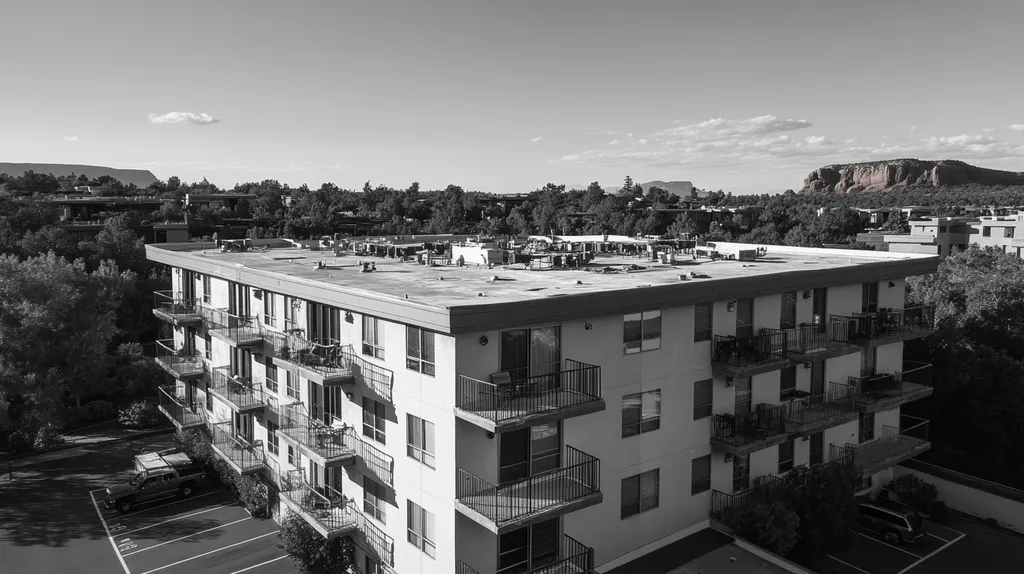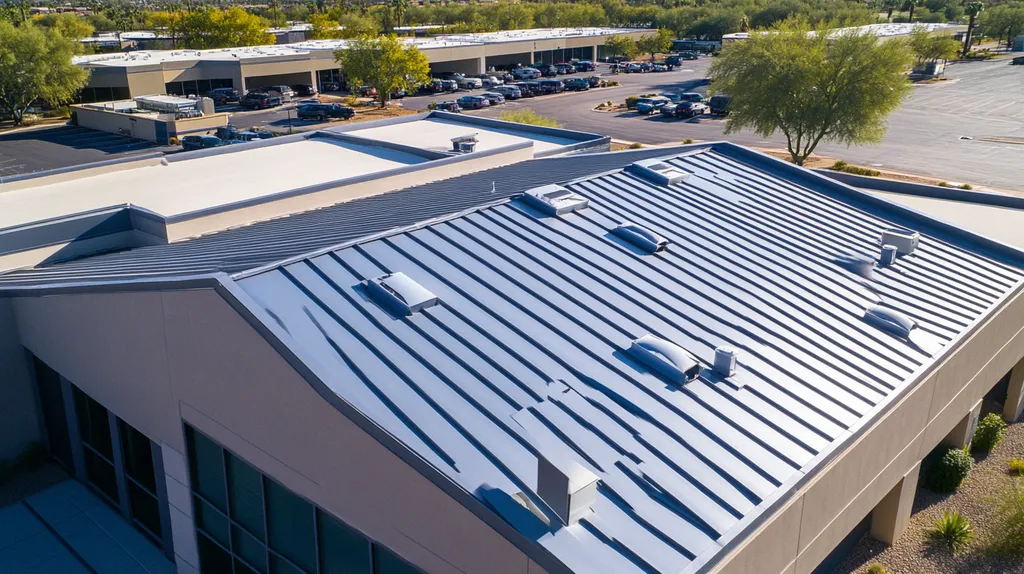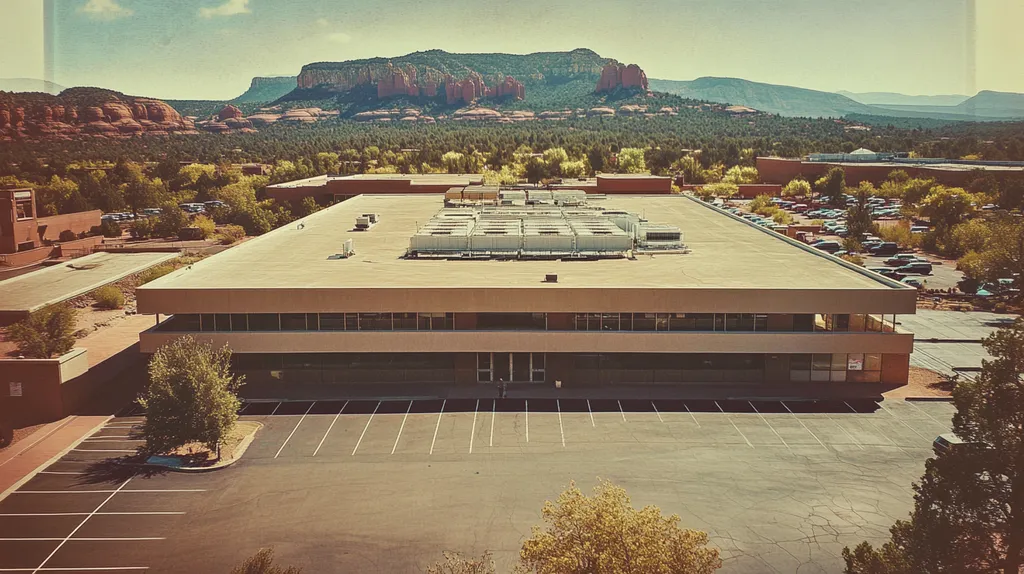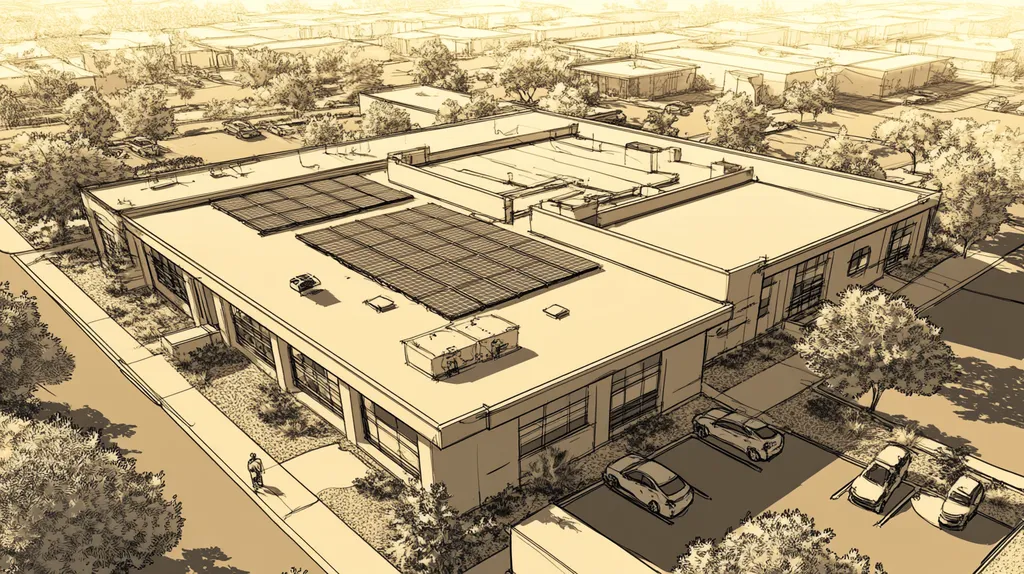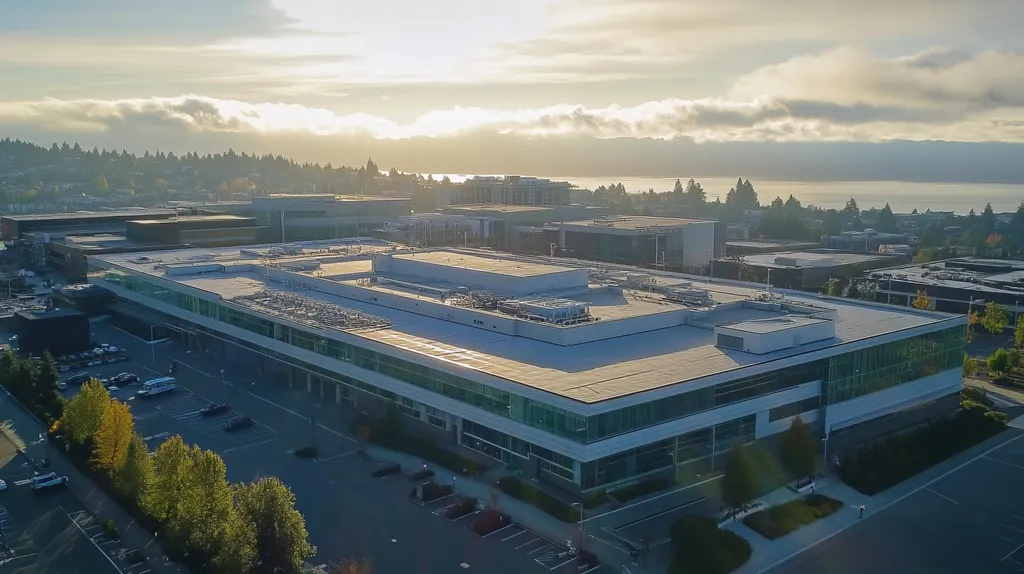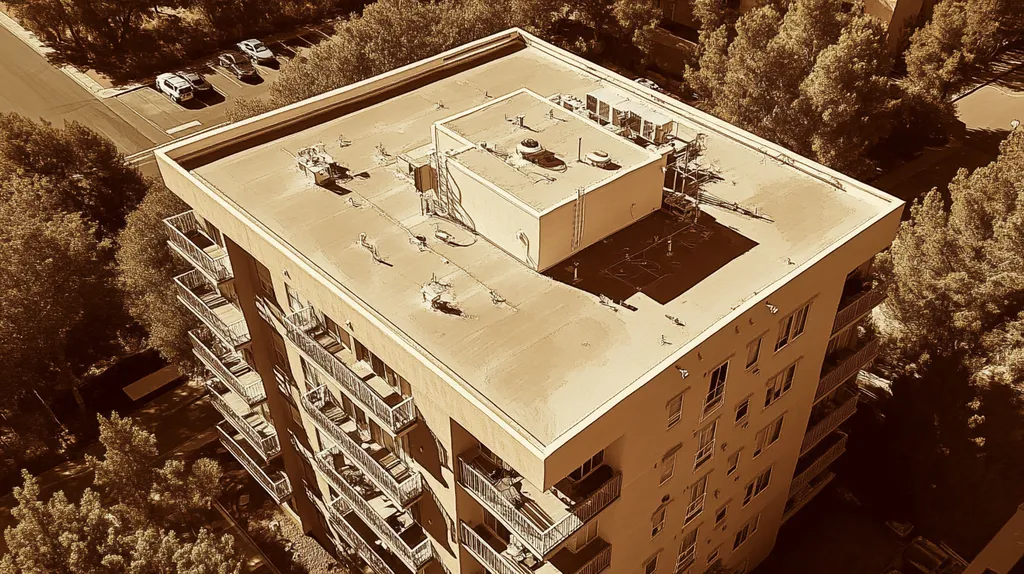Commercial roof installations can make or break a facility’s operational efficiency, with poorly managed projects causing disruptions that cost businesses an average of $20,000 per day in lost productivity.
From material selection to scheduling logistics, every decision during installation impacts daily operations, employee safety, and bottom-line results.
This comprehensive guide provides facility managers with actionable solutions across six critical areas: performance factors, financial considerations, compliance requirements, risk management, operational procedures, and long-term planning strategies.
SECTION 1: PERFORMANCE FACTORS
The performance of a commercial roof installation is crucial for maintaining smooth daily operations. How well a roof withstands the elements can impact safety, efficiency, and ultimately, the bottom line. With roof repairs often costing thousands of dollars and downtime hampering productivity, facility managers must recognize the importance of selecting appropriate materials, effective drainage systems, and ensuring high-quality installation. This section will provide an in-depth look at these vital performance factors to guide informed decision-making.
Roof Material Durability and Weather Resistance
Choosing the right roofing material is essential to ensure a roof’s durability and resilience against harsh weather. Options like TPO and EPDM membranes are excellent for UV resistance and energy efficiency, which can substantially lower heating and cooling expenses. Metal roofing, on the other hand, is celebrated for its longevity, often lasting up to 50 years when properly maintained.
Inappropriate material selection in certain climates can result in rapid wear and tear, leading to leaks and structural harm. For instance, while asphalt shingles might perform well in milder areas, they may fail spectacularly in severe weather, resulting in expensive repairs. These scenarios highlight the necessity of matching roofing material to local climatic conditions.
Finally, high-quality materials provide robust protection against extreme temperatures, heavy winds, and hail. A well-performing roof minimizes operational disruptions and reduces the chances of emergency repairs.
Key Action Items
Drainage and Water Management Systems
Effective drainage systems are essential to prevent water accumulation that can deteriorate roof integrity and lead to major structural problems. For example, flat roofs with poor drainage can experience ponding water, raising the risk of leaks and increasing maintenance expenses.
Installing sufficient gutters, downspouts, and drain outlets can dramatically alleviate water-related issues. It’s critical that these systems are designed considering local rainfall patterns and comply with building codes to avoid further complications.
Additionally, features like tapered insulation can aid in guiding water towards drainage points, enhancing water flow and preventing stagnation. This proactive approach not only safeguards the roof but also improves the facility’s overall functionality.
Key Action Items
Impact of Installation Quality on Roof Longevity
The quality of installation is crucial for ensuring the longevity and functionality of any roofing system. Subpar installation can lead to a myriad of problems, including improper sealing and insufficient insulation, which can create vulnerabilities in the roof structure.
Research indicates that roofs installed by certified professionals typically have a far longer service life than those fitted by untrained personnel. A proficient installation can also improve energy efficiency, resulting in lower operational costs over time.
Regular inspections during the installation process are vital to ensure that materials are being placed accurately and in accordance with industry standards. Facility managers should collaborate with roofing contractors to set clear quality benchmarks, significantly reducing the risk of leaks or damage in the future.
Key Action Items
SECTION 2: FINANCIAL CONSIDERATIONS
The financial repercussions of commercial roof installations go far beyond the initial costs. The materials and systems chosen can influence a facility’s economic performance over the long term. For instance, informed material selection can lead to energy cost reductions of up to 20%. This section delves into the cost-benefit analysis of roofing products, outlines what to budget for installations, and discusses various financing options available.
Cost-Benefit Analysis of Roofing Materials and Systems
A comprehensive cost-benefit analysis is essential when selecting roofing materials and systems. Each material, whether TPO, EPDM, or built-up roofing, carries different costs and advantages. For example, while TPO might entail a higher initial investment, its energy efficiency and durability make it a wise choice for long-term savings.
Investment in energy-efficient roofs translates into lower operational costs, as studies reveal they can save property owners thousands over their lifespan. Additionally, the choice of materials significantly affects maintenance expenses; roofs that require frequent repairs can strain a facility’s budget.
Carefully evaluating the financial implications of roofing options aligns asset management with business goals, ensuring that the investment contributes positively to the facility’s financial health.
Key Action Items
Budgeting for Installation: Direct and Indirect Costs
When creating a budget for a roof installation, it’s important to account for both direct and indirect costs. Direct costs cover materials, labor, and equipment essential for the project, while indirect costs can significantly impact the overall expenses if left unconsidered.
Considerations such as potential disruptions to everyday operations, decreased productivity, and even tenant displacements can derail financial plans. For instance, project delays can lead to unforeseen costs that extend the timeframe of disruption.
Additionally, future maintenance expenses should be part of the budget discussion. A roof that receives regular upkeep is more likely to last longer, providing better value for the initial investment.
Key Action Items
Financing Options and Long-Term Energy Savings
For facility managers, exploring financing options is key to improving cash flow. Methods such as leasing or financing can ease the financial burden of upfront costs, allowing payments to be distributed over time. This can make high-quality roofing materials more attainable and ensure a favorable return on investment.
Moreover, considering the long-term energy savings associated with energy-efficient roofs can further justify the investment. Many jurisdictions offer rebates or tax incentives for qualifying roofs, minimizing the overall financial commitment.
Investing in energy-efficient solutions not only lowers operational expenses but can also result in savings that cover ongoing payment obligations.
Key Action Items
SECTION 3: COMPLIANCE REQUIREMENTS
Compliance with local building codes and industry standards is paramount for successful commercial roof installations. Ignoring these regulations can lead to costly fines and project delays. As noted in a recent report, up to 30% of commercial roofing projects encounter complications due to non-compliance. Understanding these requirements not only safeguards investments but also ensures the safety and longevity of roofing systems. Below are key compliance issues that facility managers should prioritize.
Adherence to Building Codes and Industry Standards
Building codes and industry standards exist to ensure that roofing systems are safe, durable, and effective. Facility managers must educate themselves on the specific codes applicable to their region, which can vary significantly. The International Building Code (IBC), for instance, provides critical guidelines about materials, structural integrity, and fire safety that must be followed.
Complying with these codes also mitigates liability risks. In the event of roof failure, proper documentation showing adherence to standards can protect against costly lawsuits. Regular interaction with local building authorities can help ensure all installation aspects meet current regulations.
Additionally, hiring contractors with local compliance experience can streamline the installation process. Knowledgeable professionals are well-versed in regional codes and can help navigate approvals and inspections efficiently, making adherence to building codes both a regulatory necessity and a sound business strategy.
Key Action Items
Environmental and Energy Efficiency Regulations
Environmental regulations, including energy efficiency standards, are becoming increasingly relevant in roofing installations. Regulatory agencies often have requirements aimed at promoting sustainability and reducing carbon footprints. This shift presents an opportunity for facility managers to enhance building appeal and operational efficiency.
The ENERGY STAR certification, for example, advocates for the use of reflective roofing materials that can help minimize energy costs. Such materials not only contribute to a building’s environmental credentials but may also result in tax incentives for property owners.
Failing to comply with these regulations can lead to penalties and a negative perception among stakeholders. Therefore, facility managers should aim to integrate eco-friendly practices into their roofing strategies, aligning financial goals with sustainability efforts.
Key Action Items
Documentation and Inspection Protocols for Compliance
Thorough documentation is essential for compliance throughout commercial roofing installations. Facility managers should keep detailed records that include inspection reports, material warranties, and compliance verification documents. These materials provide crucial evidence of adherence to all regulations.
Conducting regular inspections during the installation process can help identify compliance concerns early. Setting a systematic inspection schedule allows for timely adjustments before minor issues become major setbacks. Engaging a third-party inspector can further enhance the review of compliance standards.
Moreover, facility managers need to stress the significance of documentation with their contractors. Clear communication regarding required paperwork and inspection protocols will facilitate a seamless installation experience. A solid documentation practice nurtures accountability and mitigates potential compliance-related challenges down the line.
Key Action Items
SECTION 4: RISK MANAGEMENT
Effective risk management during a commercial roof installation is vital for protecting both assets and daily operations. The consequences of insufficient planning can be significant, leading to costly delays or unsafe conditions. Research indicates that nearly 40% of roof-related accidents are attributed to inadequate risk assessments. Facility managers must take the initiative by identifying hazards, preparing for potential weather disruptions, and ensuring appropriate insurance coverage to navigate these risks successfully.
Identifying and Mitigating Structural and Safety Hazards
Recognizing structural and safety hazards is critical for ensuring a secure environment during roof installations. Facility managers should perform thorough assessments before any work begins to identify common issues such as roof load capacity and the placement of heavy equipment or scissor lifts.
Failing to address these concerns can compromise safety and lead to injuries or property damage. A comprehensive risk assessment should also consider nearby facilities and public spaces to protect workers and bystanders throughout the process.
Implementing safety protocols in line with OSHA regulations helps to significantly reduce onsite dangers. Regular safety training for contractors and staff fosters a culture of safety, minimizing accidents and enhancing trust with stakeholders.
Key Action Items
Planning for Weather-Related and Operational Disruptions
Weather conditions can dramatically impact the timeline and effectiveness of a roof installation. Facility managers need to account for seasonal factors like rain, snow, or extreme temperatures, which could delay progress. Developing a comprehensive contingency plan is essential for these situations.
Monitoring weather forecasts allows for timely adjustments to installation schedules. The plan should clearly outline methods for securing materials and protecting ongoing work, such as utilizing tarps to prevent water damage during unexpected rain showers.
In addition, nearby construction or supply chain delays can create further operational disruptions. Maintaining open lines of communication with contractors and suppliers is critical to handling these issues quickly and keeping the installation on schedule.
Key Action Items
Insurance Coverage and Liability Considerations
A solid understanding of insurance coverage is essential for managing risk during roof installations. Many facility managers may overlook the level of coverage required to fully protect their investments. It’s crucial to review existing policies to ensure they adequately cover potential liabilities related to construction and installation.
Contractors should maintain proper insurance, including general liability and workers’ compensation, minimizing unexpected costs due to accidents or damage during the project. Always request proof of insurance before starting any work.
Liability waivers can also play a significant role in mitigating risk, clarifying the responsibilities of both facility managers and contractors. Such legal documents can help define roles and responsibilities, easing confusion in the event of unforeseen incidents.
Key Action Items
SECTION 5: OPERATIONAL PROCEDURES
In the dynamic landscape of commercial operations, a roof installation can significantly disrupt daily activities. Delays or unexpected interruptions can result in considerable financial losses and customer dissatisfaction. A study highlighted that unplanned disruptions during roofing work could cost businesses around $20,000 per day. To safeguard both the facility and its profits, establishing robust operational procedures is crucial for ensuring seamless installations.
Scheduling and Phasing to Minimize Business Disruption
Strategic scheduling and phased approaches are paramount for mitigating interruptions during roof installations. This involves careful planning of the project timeline to align with operational hours, such as scheduling work during weekends or off-peak hours to minimize impact.
Breaking the project into manageable phases can allow ongoing business operations, even amid construction. This method limits disruption and permits continual monitoring and adjustment as the installation progresses.
Tools like Gantt charts can enhance project management by providing visibility into timelines and interdependencies, ensuring accountability among contractors and assisting facility managers in making necessary real-time adjustments.
Key Action Items
On-Site Safety and Access Control During Installation
Ensuring safety during roof installations is a priority, protecting both workers and the facility. Implementing access control measures is essential to prevent unauthorized entry and safeguard sensitive areas. This may include temporary barriers or fencing around the worksite.
Moreover, clear signage and communication of safety protocols help raise awareness about potential hazards among staff and contractors. Regular safety briefings reinforce compliance with safety regulations, reducing the likelihood of accidents.
Additionally, creating an emergency contingency plan is vital. The plan should detail procedures for evacuation and medical emergencies, ensuring both asset and personnel safety. Continually monitoring safety practices during installation fosters a culture of vigilance and accountability.
Key Action Items
Communication Strategies with Contractors and Staff
Effective communication during a roofing project is vital for maintaining operational continuity. Regular updates with contractors foster transparency and facilitate quick resolutions to any issues. Weekly meetings can be a great way to track project progress and address challenges proactively.
It’s equally important to keep staff informed about project timelines and any expected disruptions. Creating a structured communication plan, including emails or bulletins, helps set clear expectations for employees regarding any changes in their work environment.
Incorporating feedback mechanisms allows staff to voice concerns or propose ideas related to the roofing project. This approach builds trust and enhances collaboration, ensuring all parties work towards the successful completion of the installation.
Key Action Items
SECTION 5: OPERATIONAL PROCEDURES
In the fast-paced world of commercial business, roof installation can pose significant risks to daily operations. Delays or disruptions can lead to lost revenue and customer dissatisfaction. A 2019 study found that unplanned interruptions during roofing projects could cost businesses approximately $20,000 a day in operational losses. Implementing strategic operational procedures is vital to ensure smooth installations that protect both the facility and its bottom line.
Scheduling and Phasing to Minimize Business Disruption
Effective scheduling and phasing are essential for minimizing disruptions during roof installation. Carefully coordinating the project timeline to coincide with business operations is crucial. For instance, scheduling installation work during weekends or off-peak hours can significantly reduce the impact on daily activities.
A phased approach can also be beneficial. By breaking the project into smaller segments, businesses can continue some operations even while construction is underway. This strategy limits overall disruption and allows for ongoing assessment and fine-tuning as the installation progresses.
Tools like Gantt charts enhance project management by providing visibility into timelines and dependencies. This increases accountability among contractors and prepares facility managers for necessary real-time adjustments.
Key Action Items
On-Site Safety and Access Control During Installation
Prioritizing safety during roof installations is essential to protect both workers and the facility. Establishing clear access control measures prevents unauthorized entry and safeguards sensitive areas. This can involve temporary fencing or barriers around the worksite.
Additionally, effective signage and communication of safety protocols to both staff and contractors ensure everyone is aware of potential hazards. Regular safety briefings for the installation team reinforce safe practices and regulatory compliance, reducing accident risks.
Developing a contingency plan for emergencies is also crucial. This plan should outline procedures for evacuation, medical emergencies, and addressing potential accidents on-site, ensuring the safety of both assets and personnel.
Key Action Items
Communication Strategies with Contractors and Staff
Effective communication during a roofing project is vital for maintaining operational continuity. Regular updates with contractors foster transparency and facilitate quick resolutions to any issues that may arise. Weekly meetings can be beneficial for tracking progress and addressing challenges proactively.
It’s equally important to keep staff informed about project timelines and any expected disruptions. Developing a structured communication plan, including announcements via email or internal bulletins, helps set clear expectations for employees regarding changes in their work environment.
Incorporating feedback mechanisms allows staff to voice concerns or suggest improvements related to the roofing project. This two-way communication fosters collaboration and enhances trust between management and employees.
Key Action Items
Moving Forward
Commercial roof installations represent a critical investment that impacts every aspect of facility operations, with poor planning leading to disruptions costing upwards of $20,000 per day.
The integration of performance factors, financial considerations, and compliance requirements demands a systematic approach to ensure successful outcomes.
Risk management and operational procedures must be carefully orchestrated to protect both assets and daily business functions, while long-term considerations shape the return on investment for decades to come.
With 40% of commercial roofs experiencing premature failure due to improper installation or maintenance, facility managers must leverage comprehensive planning tools and expert guidance to protect their investment.
By implementing the strategies and checklists outlined in this guide, organizations can transform what is often viewed as a necessary expense into a valuable asset that enhances building performance and operational efficiency.
FREQUENTLY ASKED QUESTIONS
Q. How does commercial roof material affect daily operations?
A. The choice of roofing material can significantly influence operational efficiency and maintenance. Durable materials minimize the risk of leaks and require fewer repairs, leading to smoother business operations. Additionally, energy-efficient options can lower utility bills, adding financial benefits to long-term functionality.
Q. What financial impacts should I consider for my industrial roof?
A. It’s essential to evaluate both initial costs and long-term savings when selecting roofing systems. Consider factors like material longevity and energy efficiency, which can significantly reduce overall operational expenses. A well-planned budget that includes potential savings can help prevent financial strain down the line.
Q. How can compliance affect my commercial roof installation?
A. Adhering to compliance requirements is critical for avoiding fines and ensuring safety. Violating local building codes can lead to costly delays and unsafe conditions. By staying informed about regulations, facility managers enhance the longevity of roofing systems while protecting their investments and community reputation.
Q. What risks should I manage during a roof installation?
A. Key risks include safety hazards, weather-related delays, and compliance issues. Conducting thorough assessments before installation can identify potential hazards and help create contingency plans. Maintaining open communication with contractors about safety measures further ensures that both assets and personnel are adequately protected throughout the process.
Q. How can I ensure minimal business disruption during roof work?
A. Strategic scheduling and phased installation approaches are key. By planning work during off-peak hours and breaking the project into manageable segments, business operations can continue with minimal impact. Regular communication with contractors about schedule changes and progress helps keep all stakeholders informed and prepared.
Q. What should be included in my roof installation communication plan?
A. A solid communication plan should outline timelines, project updates, and potential disruptions. Regular meetings with contractors and transparent updates to staff can build trust and keep everyone informed. Establishing feedback mechanisms allows for input and concerns to be addressed promptly, fostering cooperation throughout the project.
Q. What are the benefits of energy-efficient commercial roofs?
A. Energy-efficient roofs can lead to substantial cost savings through lower heating and cooling bills. Many jurisdictions offer rebates or tax incentives for these roofing systems, promoting sustainability while enhancing building appeal. Investing in energy-efficient materials contributes to a reduced environmental footprint and can ultimately increase property value.

